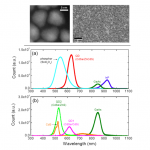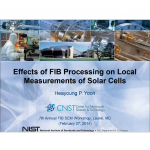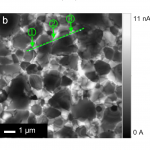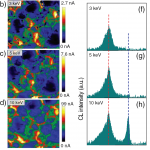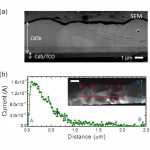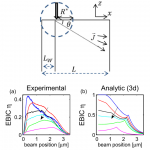 “Electron beam induced current in the high injection regime”, P. M. Haney, H. P. Yoon, P. Koirala, R. W. Collins, and N. B. Zhitenev, Nanotechnology 26, 295401, 2015.
“Electron beam induced current in the high injection regime”, P. M. Haney, H. P. Yoon, P. Koirala, R. W. Collins, and N. B. Zhitenev, Nanotechnology 26, 295401, 2015.
1. Center for Nanoscale Science and Technology, National Institute of Standards and Technology, Gaithersburg, MD 20899, USA.
2. Maryland NanoCenter, University of Maryland, College Park, MD 20742.
3. Dept. of Physics and Astronomy, University of Toledo, Toledo, OH, 43606.
ABSTRACT. Electron beam induced current (EBIC) is a powerful technique which measures the charge collection efficiency of photovoltaics with sub-micron spatial resolution. The exciting electron beam results in a high generation rate density of electron–hole pairs, which may drive the system into nonlinear regimes. An analytic model is presented which describes the EBIC response when the total electron–hole pair generation rate exceeds the rate at which carriers are extracted by the photovoltaic cell, and charge accumulation and screening occur. The model provides a simple estimate of the onset of the high injection regime in terms of the material resistivity and thickness, and provides a straightforward way to predict the EBIC lineshape in the high injection regime. The model is verified by comparing its predictions to numerical simulations in one- and two-dimensions. Features of the experimental data, such as the magnitude and position of maximum collection efficiency versus electron beam current, are consistent with the three dimensional model.





